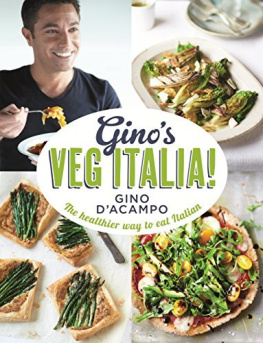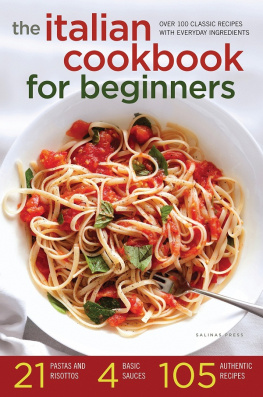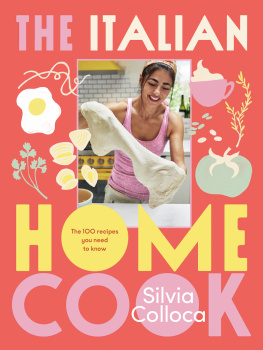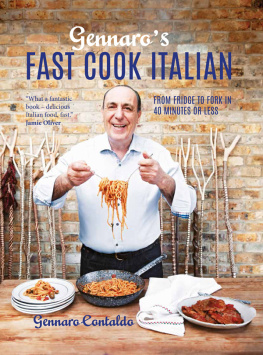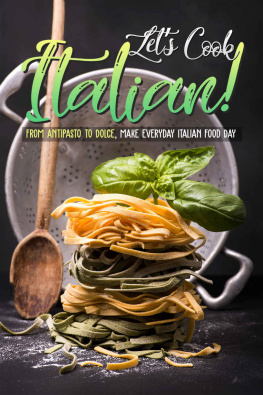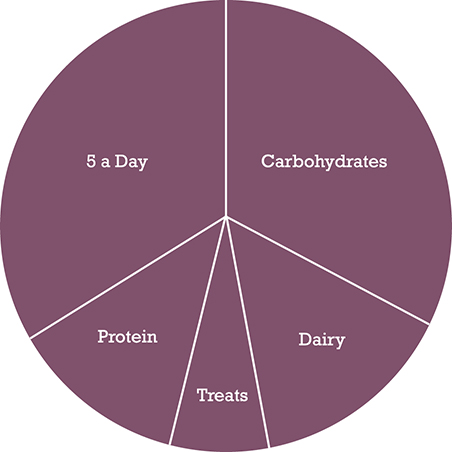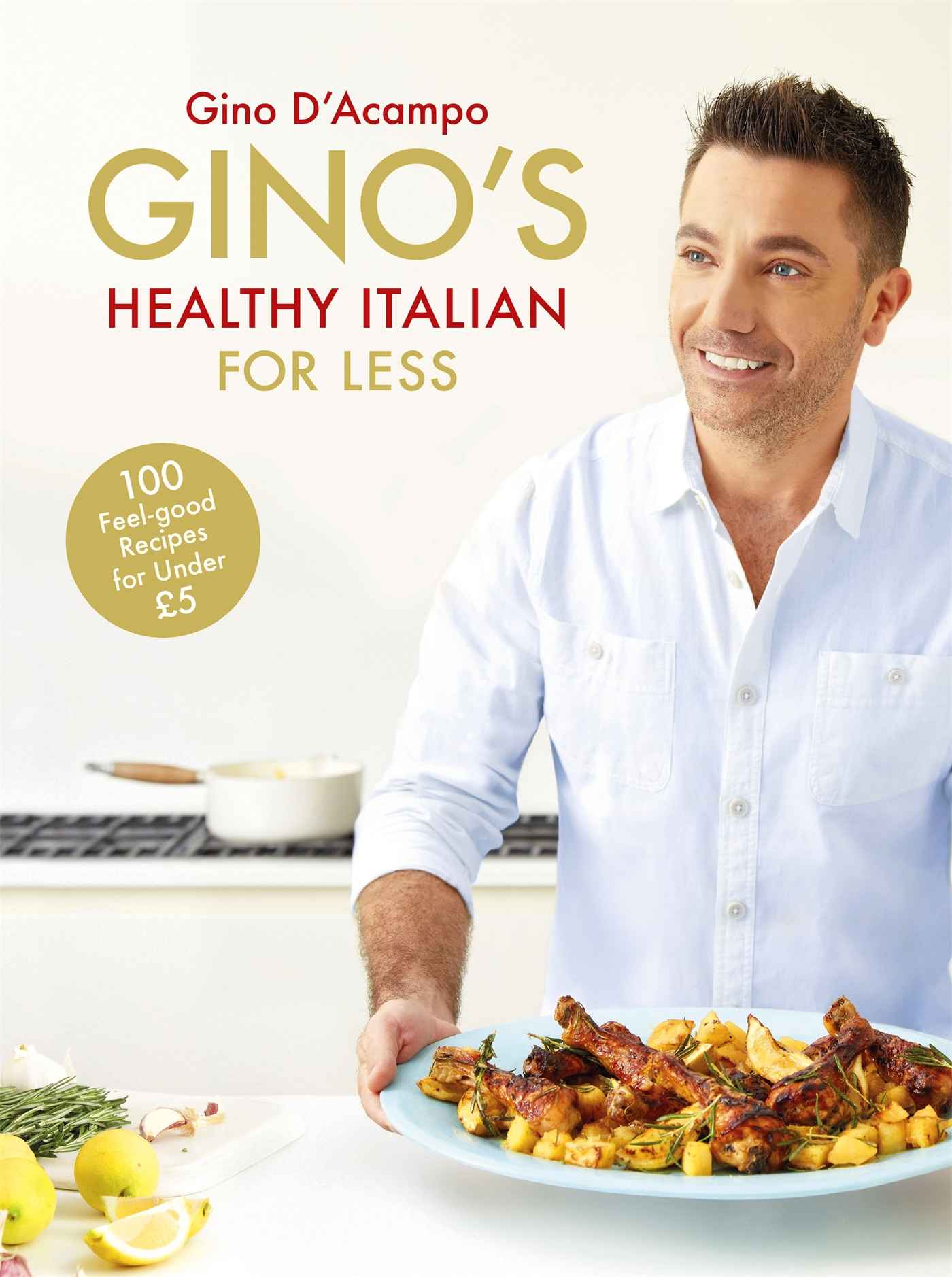
First published in Great Britain in 2017 by Hodder & Stoughton
An Hachette UK company
Copyright Gino DAcampo 2017
Photography by Tamin Jones Hodder & Stoughton 2017
The right of Gino DAcampo to be identified as the Author of the Work has been asserted by him in accordance with the Copyright, Designs and Patents Act 1988.
All rights reserved. No part of this publication may be reproduced, stored in a retrieval system, or transmitted, in any form or by any means without the prior written permission of the publisher, nor be otherwise circulated in any form of binding or cover other than that in which it is published and without a similar condition being imposed on the subsequent purchaser.
A CIP catalogue record for this title is available from the British Library
Ebook ISBN 978 1 444 79523 3
Editorial Director: Nicky Ross
Project Editor: Lauren Whelan
Nutritionist: Kerry Torrens
Design & Art Direction: Alice Moore
Photographer: Tamin Jones
Food Stylist: Rosie Reynolds
Props Stylist: Jennifer Kay
Shoot Producer: Ruth Ferrier
Editorial Researcher: Helena Caldon
Copy Editor: Clare Sayer
Proofreader: Miren Lopategui
Indexer: Caroline Wilding
Typeset in Rockwell and Futura
Colour origination by Born
Hodder & Stoughton Ltd
Carmelite House
50 Victoria Embankment
London EC4Y 0DZ
www.hodder.co.uk
CONTENTS
Cooking delicious, satisfying and healthy food on a budget has always been a way of life for Italians. Each generation passes on to the next all the clever tricks and tips we need to feed a family using what is available to us. Food is precious and celebrated, shared and eaten together as a family round the table. And it never goes to waste
We are proud of our cuisine, so whatever we eat tends to be home-made and delicious! Although the younger generations in Italy are indulging more in processed foods nowadays, they are still in a minority compared to other western nations; the majority are continuing to cook in the traditional way, using the wonderful fresh, seasonal ingredients that were so lucky to have at our fingertips.
Everyone wants to feel well and eat well and, as scientists inform us, the Mediterranean diet is a really good way to achieve both. A 2013 study by researchers from several Spanish universities found that people following a Mediterranean diet had, on average, a 30 per cent lower risk of heart disease and stroke.
The Italian way of eating follows this diet, combining fresh fruit and vegetables with starchy ingredients, a small amount of meat, and oily fish at least twice a week; this creates a diet that is low in cholesterol, low in fat and packed with fibre, vitamins and minerals. And whats more, it always tastes good and will keep everyone full and satisfied throughout the day. Snacking is not part of the Italian way of life, which is another reason why Italians have one of the lowest obesity rates in the world.
The key to the Mediterranean diet lies not just in the produce itself, but also in the fact that the food is home-made, with very little that is processed. This means that you can eat well without having to avoid your favourite foods. I cant resist pizza and pasta, not to mention the odd sweet treat, and I can have all these things in moderation because I know whats gone into them and I know I am using the best, freshest ingredients.
Eatwell Plate nutritional guidelines
The Mediterranean diet is similar to the guidelines laid out by the Food Standards Authority in the UK with its Eatwell Plate, which shows the foods needed for a balanced diet and their relative proportions.
Carbohydrates
Approximately one-third of your meals should be starchy carbohydrates, such as bread, pasta, rice or potatoes. If you can, choose wholegrain varieties for extra fibre.
5 a Day
Try to eat at least five portions of different fruits and vegetables each day (see for more on this).
Protein
Try to eat a little lean protein each day meat, eggs, beans or pulses and other non-dairy sources, plus at least two portions of fish each week, one of which should be oily, such as mackerel or salmon.
Dairy
Include some milk, cheese and yogurt. These are great sources of protein and calcium but can be high in fat so should be eaten in moderation.
Treat foods
Eat only a small amount of foods that are high in fat and/or sugar every week, such as biscuits, cakes, ice cream and soft drinks.
The recipes in this book have been devised with all these guidelines in mind, and each with an upper limit of 650 calories. Of course, some recipes are closer to that count than others, depending on whether they are a main course or a treat, so be sensible when planning your meals if you are preparing a more calorific meal, make sure that the other two meals of the day are not equally high in calories, fat or salt. And dont snack. Not only is this a really expensive way to eat, but its also very unhealthy you wont be able to keep track of what you are eating, which will load you up with empty calories.
Like most Italians, I include oil, butter and cheese in my dishes, but because these are high-fat ingredients, I keep quantities to a minimum. Also, I dont need too much of them because most Italian food uses natural flavourings, particularly herbs, which have barely any calories. I do use salt, too, but again, no more than necessary. If you are on a diet that heavily restricts such ingredients, check the nutrient counts listed on each recipe and make a judgement. Whenever you cook, though, you should taste before you season. Its all about the flavours, so how will you know what it needs if you dont try it first?
In this book I want to prove that its really easy to eat healthily, but this time I want to show that you can also do it on a budget. Although food prices have soared in recent years and sticking to a budget has become more of a challenge, particularly if we want to eat well, my style of eating is not expensive. All my recipes in this book use everyday ingredients that you can get from your high-street supermarket or local market you dont need to go to any specialist shops or trawl the internet for weird and expensive ingredients.
The recipes in this book will feed four people for 5, but Ive also included recipes to feed friends or larger families these also work on a budget of 1.25 per head. Ive costed them based on the average prices across four major supermarkets in the winter of 2016. Obviously, prices change for certain ingredients according to their season (see Seasonal Calendar, ), and other factors, from the state of the economy to the climate, mean we may face further rises in food prices with some foods becoming much more expensive. Ive included tips throughout to give you ideas on how to ring the changes according to whats in season or what you have in the cupboards and there are plenty of handy little tricks to get the most delicious results from the recipes.
Next page

